
- Order:
- Duration: 4:48
- Published: 29 Nov 2008
- Uploaded: 01 Mar 2011
- Author: roddy76to86





























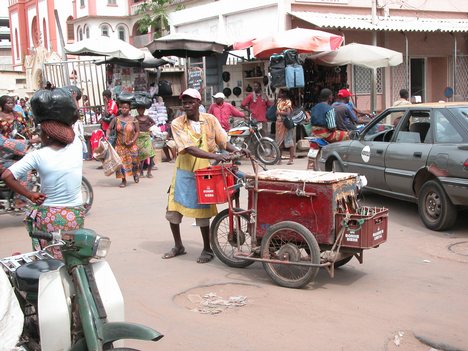

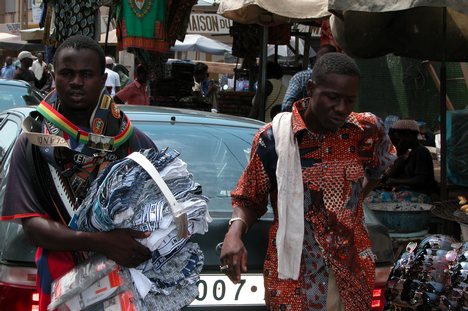


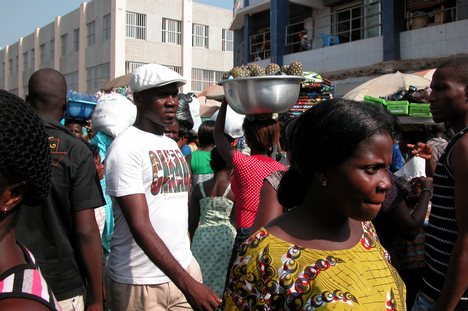



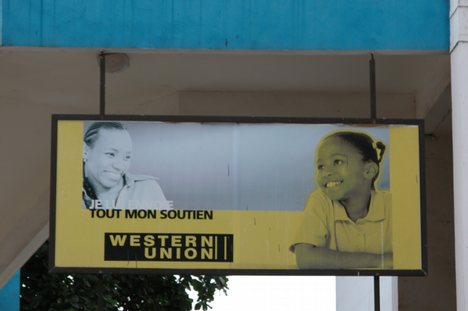









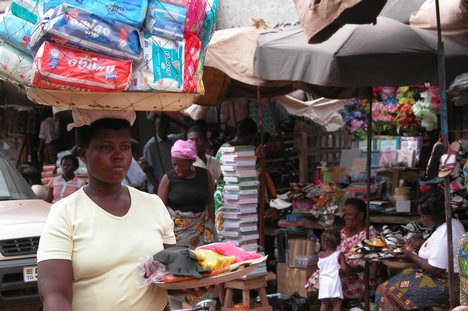


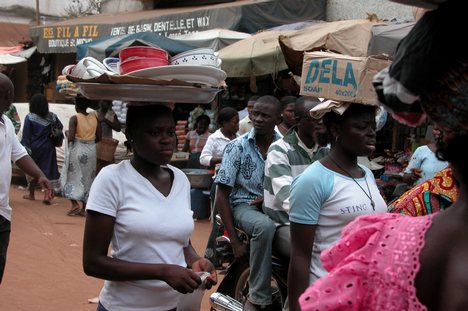

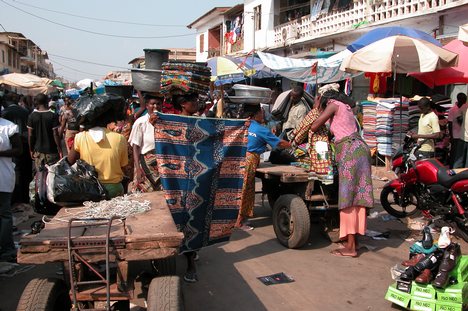
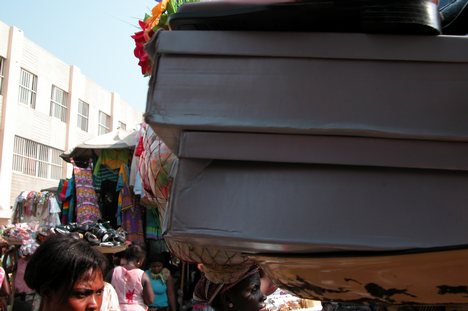
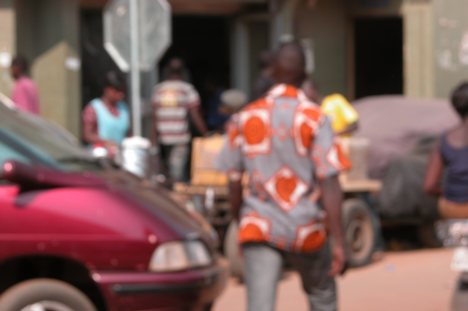


This text is licensed under the Creative Commons CC-BY-SA License. This text was originally published on Wikipedia and was developed by the Wikipedia community.
| Name | Ian Dury |
|---|---|
| Landscape | Yes |
| Background | solo_singer |
| Birth name | Ian Robins Dury |
| Birth date | May 12, 1942 |
| Birth place | Harrow, Middlesex, England, UK |
| Origin | Upminster, England, UK |
| Death date | March 27, 2000 |
| Instrument | Vocals, drums |
| Genre | Rock and roll revival, protopunk, New Wave, funk |
| Occupation | Singer, lyricist, actor |
| Years active | 1971–2000 |
| Label | Dawn, Stiff, Polydor, Demon, Ronnie Harris |
| Associated acts | Kilburn & the High Roads, The Blockheads |
| Url | IanDury.com |
| Type | single |
| Filename | Ian Dury And The Blockheads - Hit Me With Your Rhythm Stick excerpt.ogg |
| Format | Ogg |
| Title | "Hit Me With Your Rhythm Stick"}} |
Ian Robins Dury (12 May 1942 – 27 March 2000) was an English rock and roll singer, lyricist, bandleader and actor who initially rose to fame during the late 1970s, during the punk and New Wave era of rock music. He is best known as founder, frontman, and lead singer of the British band Ian Dury and the Blockheads, who were one of the groups of the New Wave era in the UK.
William Dury trained with Rolls-Royce to be a chauffeur, and was then absent for long periods, so Peggy Dury took Ian to stay with her parents in Cornwall. After the Second World War, the family moved to Switzerland, where his father chauffeured for a millionaire and the Western European Union. In 1946 Peggy brought Ian back to England and they stayed with her sister, Mary, a physician in Cranham, a small village bordering Upminster. Although he saw his father on visits, they never lived together again.
At the age of seven, he contracted polio; very likely, he believed, from a swimming pool at Southend on Sea during the 1949 polio epidemic. After six weeks in a full plaster cast in Truro hospital, he was moved to Black Notley Hospital, Braintree, Essex, where he spent a year and a half before going to Chailey Heritage Craft School, East Sussex, in 1951. Chailey was a school and hospital for disabled children, and believed in toughening them up, contributing to the observant and determined person Dury became. Chailey taught trades such as cobbling and printing, but Dury's mother wanted him to be more academic, so his aunt Moll arranged for him to enter the Royal Grammar School, High Wycombe which he attended until the age of 16 when he left to study painting at Walthamstow Art College, having gained GCE 'O' Levels in English Language, English Literature and Art.
From 1964 he studied art at the Royal College of Art under British artist Peter Blake, and in 1967 took part in a group exhibition, Fantasy and Figuration, alongside Pat Douthwaite, Herbert Kitchen and Stass Paraskos at the Institute of Contemporary Arts in London. When asked why he did not pursue a career in art, he said, "I got good enough [at art] to realise I wasn't going to be very good." From 1967 he taught art at various colleges in the south of England. Dury divorced Rathmell in 1985, but remained on good terms.
Dury's lyrics are a distinctive combination of lyrical poetry, word play, observation of British everyday (working-class) life, acute character sketches, and vivid, earthy sexual humour. "This is what we find ... [H]ome improvement expert Harold Hill of Harold Hill, Of do-it-yourself dexterity and double-glazing skill, Came home to find another gentleman's kippers in the grill, So he sanded off his winkle with his Black & Decker drill." The song "Billericay Dickie" continues this sexual content, rhyming "I had a love affair with Nina, In the back of my Cortina" with "A seasoned-up hyena, Could not have been more obscener".
The Blockheads' sound drew from its members' diverse musical influences, which included jazz, rock and roll, funk, and reggae, and Dury's love of music hall. The band was formed after Dury began writing songs with pianist and guitarist Chaz Jankel (the brother of noted music video, TV, commercial and film director Annabel Jankel). Jankel took Dury's lyrics, fashioned a number of songs, and they began recording with members of Radio Caroline's Loving Awareness Band—drummer Charley Charles (born Hugh Glenn Mortimer Charles, Guyana 1945), bassist Norman Watt-Roy, keyboard player Mick Gallagher, guitarist John Turnbull -- and former Kilburns saxophonist Davey Payne. An album was completed, but major record labels passed on the band. However, next door to Dury's manager's office was the newly formed Stiff Records, a perfect home for Dury's maverick style. Their classic single, "Sex & Drugs & Rock and Roll", marked Dury's Stiff debut and although it was banned by the BBC it was named Single of the Week by NME on its release. It was soon followed by the album New Boots and Panties!!, which was eventually to achieve platinum status. In October 1977 Dury and his band started performing as Ian Dury & The Blockheads, when the band signed on for the Stiff "Live Stiffs Tour" alongside Elvis Costello And The Attractions, Nick Lowe, Wreckless Eric, and Larry Wallis. The tour was a success, and Stiff launched a concerted Ian Dury marketing campaign, resulting in the Top Ten hit, "What a Waste", and the classic hit single, "Hit Me With Your Rhythm Stick", which reached #1 in the UK, was notably not included on the original release of their subsequent LP Do It Yourself. Both the single and its accompanying music video featured Davey Payne simultaneously playing dual saxophones during his solo, in evident homage to jazz saxophonist Rahsaan Roland Kirk, whose 'trademark' technique this was.
The band's second album Do It Yourself was released in June 1979 in a Barney Bubbles-designed sleeve of which there were over a dozen variations, all based on samples from the Crown wallpaper catalogue. Bubbles also designed the Blockhead logo (illustrated on the left) which received international acclaim, and continued to be used by the Blockheads after Dury's death, e.g. on their DVD: Live in Colchester 2004.
Jankel left the band temporarily and relocated to the U.S. after the release of "What A Waste" (his organ part on that single was overdubbed later) but he subsequently returned to the UK and began touring sporadically with the Blockheads, eventually returning to the group full-time for the recording of "Hit Me With Your Rhythm Stick"; according to Mickey Gallagher, the band recorded 28 takes of the song but eventually settled on the second take for the single release. Partly due to personality clashes with Dury, The Blockheads disbanded in early 1982 after Dury secured a new recording deal with Polydor Records through A&R; man Frank Neilson. Choosing to work with a group of young musicians which he named The Music Students, he recorded the album Four Thousand Weeks' Holiday. This album marked a departure from his usual style and was not as well received by fans for its American jazz influence.
The Blockheads briefly reformed in June 1987 to play a short tour of Japan, and then disbanded again. In September 1990, following the death from cancer of drummer Charley Charles, they reunited for two benefit concerts in aid of Charles' family, held at The Forum, Kentish Town, with Steven Monti on drums. In December 1990, augmented by Merlin Rhys-Jones on guitar and Will Parnell on percussion, they recorded the live album Warts & Audience at the Brixton Academy.
Dury wrote and performed the theme song "Profoundly in Love with Pandora" for the television series The Secret Diary of Adrian Mole, Aged 13 3/4 (1985), based on the book of the same name by Sue Townsend, as well as its follow-up, The Growing Pains of Adrian Mole (1987). Dury turned down an offer from Andrew Lloyd Webber to write the libretto for Cats (from which Richard Stilgoe reportedly earned millions). The reason, said Dury, "I can't stand his music." "... I said no straight off. I hate Andrew Lloyd Webber. He's a wanker, isn't he? ... [E]very time I hear 'Don't Cry for Me Argentina' I feel sick, it's so bad. He got Richard Stilgoe to do the lyrics in the end, who's not as good as me. He made millions out of it. He's crap, but he did ask the top man first!"
When AIDS first came to prominence in the mid-1980s, Dury was among celebrities who appeared on UK television to promote safe sex, demonstrating how to put on a condom using a model of an erect penis. In the 1990s, he became an ambassador for UNICEF, recruiting stars such as Robbie Williams to publicise the cause. The two visited Sri Lanka in this capacity to promote polio vaccination. Dury appeared with Curve on the Peace Together concert and CD (1993), performing "What a Waste", with benefits to the Youth of Northern Ireland. He also supported the charity Cancer BACUP.
Dury appeared in the Classic Albums episode that focused on Steely Dan's album, Aja. Dury commented that the album was one of the most "hopeful" he'd ever heard, and that the album "lifted [his] spirits up" whenever he played it. He also felt that it showed Steely Dan's love for jazz musicians and that it had "California in its blood...[even though it was recorded by] boys from New York."
Dury also appeared at the end of the Carter USM track 'Skywest & Crooked' narrating from the book Don Quixote. The track appeared on the Carter USM album 1992 The Love Album.
In 1998, his death was incorrectly announced on XFM radio by Bob Geldof, possibly due to hoax information from a listener.
In 1999, Dury collaborated with Madness on their first original album in fourteen years on the track "Drip Fed Fred". Suggs and the band cite him as a great influence. It was to be one of his last recordings.
Ian Dury & The Blockheads' last performance was a charity concert in aid of Cancer BACUP on 6 February 2000 at The London Palladium, supported by Kirsty MacColl and Phill Jupitus. Dury was noticeably ill and had to be helped on and off stage.
Principal photography for the biopic Sex & Drugs & Rock & Roll began in May 2009. Starring Andy Serkis as Dury, the film was released on 8 January 2010. Ray Winstone and Naomie Harris also appeared.
Category:1942 births Category:2000 deaths Category:Academics of the University for the Creative Arts Category:Alumni of the Royal College of Art Category:English male singers Category:Old Wycombiensians Category:People from Harrow Category:People from Upminster Category:People from Cornwall Category:Pub rock musical groups Category:Protopunk musicians Category:Poliomyelitis
This text is licensed under the Creative Commons CC-BY-SA License. This text was originally published on Wikipedia and was developed by the Wikipedia community.
| Caption | At the 66th Venice International Film Festival, September 2009 |
|---|---|
| Birth name | Julie Anne Smith |
| Birth date | December 03, 1960 |
| Birth place | Fayetteville, North Carolina, U.S. |
| Occupation | Actress |
| Spouse | |
| Years active | 1983–present |
Julianne Moore (born December 3, 1960) is an American actress and a children's book author.
She began her acting career in 1983 in minor roles, before joining the cast of the soap opera As the World Turns, for which she won a Daytime Emmy Award in 1988. She began to appear in supporting roles in films during the early 1990s, achieving recognition in several independent films before her performance in Boogie Nights (1997) brought her widespread attention and nominations for several major acting awards. Her success continued with films such as The End of the Affair (1999) and Magnolia (1999). She was acclaimed for her portrayal of a betrayed wife in Far from Heaven (2002), winning several critic awards as best actress of the year, in addition to several other nominations, including the Academy Award, Golden Globe, and Screen Actors Guild Award. The same year she was also nominated for several awards as best supporting actress for her work in The Hours.
During the late 1990s and early 2000s, Moore appeared in a series of films that received Oscar recognition, including her roles in Boogie Nights (Best Supporting Actress nomination), The End of the Affair (Best Actress nomination), and her two 2002 films, The Hours (Best Supporting Actress nomination) and Far from Heaven (Best Actress nomination), for which she also won "Best Actress" from numerous critics groups (see below for a list) and from the Venice Film Festival. 2006 also saw the releasing of three of her films: Freedomland, which opened in February to mixed reviews, followed by Trust the Man, directed by her husband Bart Freundlich, and the critically acclaimed science fiction feature Children of Men. The following year she appeared opposite Nicolas Cage and Jessica Biel in Next, a science fiction action film based on The Golden Man, a short story by Philip K. Dick; and the controversial incest film Savage Grace, the story of a high-society mother and son whose Oedipal relationship ends in tragedy. In 2008, she starred alongside Mark Ruffalo in Blindness, a thriller from director Fernando Meirelles.
The next year Moore appeared opposite Colin Firth in the well-received American drama A Single Man, for which she received her fifth Golden Globe nomination. When the cancellation of As the World Turns was announced in late 2009, Moore decided to honor the soap that brought her fame and temporarily returned for a few days as Frannie Hughes, to which fans responded with great admiration. During the 2009–2010 season of 30 Rock, she had a guest role as Nancy Donovan, a love interest for Alec Baldwin's character.
In 2010, Moore starred in the erotic thriller Chloe, theatrically released by Sony Pictures Classics and grossing $3 million in the United States. Moore next appeared in the comedy-drama The Kids Are All Right, co-starring Annette Bening and Mark Ruffalo. The film was both a critical and commercial success, garnering a Gotham Awards nomination for Best Ensemble Performance and an Independent Spirit Awards nomination for Best Film.
She is a pro-choice activist and during the 2004 presidential election donated $2,000 to John Kerry's presidential campaign. Since 2002, she has been involved with the TS Alliance to raise awareness of tuberous sclerosis and is an Artist Ambassador for Save the Children's programs in the United States.
She actively supports same-sex marriage.
Category:1960 births Category:Actors from North Carolina Category:American actors of Scottish descent Category:American film actors Category:American soap opera actors Category:American stage actors Category:American television actors Category:Boston University alumni Category:Daytime Emmy Award winners Category:Independent Spirit Award for Best Female Lead winners Category:Living people Category:Military brats Category:People from Fayetteville, North Carolina Category:People from Greenwich Village, New York
This text is licensed under the Creative Commons CC-BY-SA License. This text was originally published on Wikipedia and was developed by the Wikipedia community.
| Name | Isamu Noguchi |
|---|---|
| Caption | Isamu Noguchi, 1941. |
| Birthdate | November 17, 1904 |
| Birthplace | Los Angeles, California |
| Deathdate | December 30, 1988 |
| Deathplace | New York City, New York |
| Nationality | American |
| Field | Sculpture, landscape architecture, furniture design |
| Movement | Biomorphism |
| Works | Red Cube (New York City), Black Sun (Seattle), Sky Gate (Honolulu), Akari lanterns, Herman Miller lounge table |
| Awards | Logan Medal of the arts (Art Institute of Chicago), 1963; Gold Medal, Architectural League of New York, 1965; Brandeis Creative Arts Award, 1966; Gold Medal (American Academy of Arts and Letters), 1977; Order of the Sacred Treasure; National Medal of Arts (1987) |
was a prominent Japanese American artist and landscape architect whose artistic career spanned six decades, from the 1920s onward. Known for his sculpture and public works, Noguchi also designed stage sets for various Martha Graham productions, and several mass-produced lamps and furniture pieces, some of which are still manufactured and sold.
Among his furniture work was his collaboration with the Herman Miller company in 1948 when he joined with George Nelson, Paul László and Charles Eames to produce a catalog containing what is often considered to be the most influential body of modern furniture . His work lives on around the world and at the Noguchi Museum in New York City.
Yone had ended his relationship with Gilmour earlier that year and planned to marry his true romance, The Washington Post reporter Ethel Armes. After proposing to Ethel Armes, Yone left for Japan in late August, settling in Tokyo and awaiting her arrival; their engagement fell through months later when she learned of Léonie and her newborn son.
In 1906, Yone invited Léonie to come to Tokyo with their son. She at first refused, but growing anti-Japanese sentiment following the Russo–Japanese War eventually convinced her to take up Yone's offer. The two departed from San Francisco in March 1907, arriving in Yokohama to meet Yone. Upon arrival, their son was finally given the name Isamu (, "courage"). However, Yone had taken a Japanese wife by the time they arrived, and was mostly absent from his son's childhood. After again separating from Yone, Léonie and Isamu moved several times throughout Japan.
In 1912, while the two were living in Chigasaki, Isamu's half-sister, pioneer of the American Modern Dance movement Ailes Gilmour, was born to Léonie and an unknown father. Here, Léonie had a house built for the three of them, a project that she had the 8-year-old Isamu "oversee". Nurturing her son's artistic ability, she put him in charge of their garden and apprenticed him to a local carpenter. However, they moved once again in December 1917 to an English-speaking community in Yokohama.
In 1918, Noguchi was sent back to the U.S. for schooling in Rolling Prairie, Indiana. After graduation, he left with Dr. Edward Rumely to LaPorte, where he found boarding with a Swedenborgian pastor, Samuel Mack. Noguchi began attending La Porte High School, graduating in 1922.
He then traveled to New York City, reuniting with the Rumely family at their new residence, and with Dr. Rumely's financial aid enrolled in February 1922 as a premedical student at Columbia University. Soon after, he met the bacteriologist Hideyo Noguchi, who urged him to reconsider art, as well as the Japanese dancer Michio Itō, whose celebrity status later helped Noguchi find acquaintances in the art world. Another influence was his mother, who in 1923 moved from Japan to California, then later to New York.
In 1924, while still enrolled at Columbia, Noguchi followed his mother's advice to take night classes at the Leonardo da Vinci Art School. The school's head, Onorio Ruotolo, was immediately impressed by Noguchi's work. Only three months later, Noguchi held his first exhibit, a selection of plaster and terra cotta works. He soon dropped out of Columbia University to pursue sculpture full-time, changing his name from Gilmour (the surname he had used for years) to Noguchi.
After moving into his own studio, Noguchi found work through commissions for portrait busts, he won the Logan Medal of the arts. During this time, he frequented avant-garde shows at the galleries of such modernists as Alfred Stieglitz and J. B. Neuman, and took a particular interest in a show of the works of Romanian sculptor Constantin Brancusi.
In late 1926, Noguchi applied for a Guggenheim Fellowship. In his letter of application, he proposed to study stone and wood cutting and to gain "a better understanding of the human figure" in Paris for a year, then spend another year traveling through Asia, exhibit his work, and return to New York. He was awarded the grant despite being three years short of the age requirement.
Noguchi only produced one sculpture – his marble Sphere Section – in his first year, but during his second year he stayed in Paris and continued his training in stoneworking with the Italian sculptor Mateo Hernandes, producing over twenty more abstractions of wood, stone and sheet metal. Noguchi's next major destination was to be India, from which he would travel east; he arrived in London to read up on Oriental Sculpture, but was denied the extension to the Guggenheim Fellowship he needed.
In February 1929, he left for New York City. Brancusi had recommended that Noguchi visit Romany Marie's café in Greenwich Village. Noguchi did so and there met Buckminster Fuller, with whom he collaborated on several projects, including the modeling of Fuller's Dymaxion car.
Upon his return, Noguchi's abstract sculptures made in Paris were exhibited in his first one-man show at the Eugene Schoen Gallery. After none of his works sold, Noguchi altogether abandoned abstract art for portrait busts in order to support himself. He soon found himself accepting commissions from wealthy and celebrity clients. A 1930 exhibit of several busts, including those of Martha Graham and Buckminster Fuller, garnered positive reviews, and after less than a year of portrait sculpture, Noguchi had earned enough money to continue his trip to Asia.
Noguchi left for Paris in April 1930, and two months later received his visa to ride the Trans-Siberian Railway. He opted to visit Japan first rather than India, but after learning that his father Yone did not want his son to visit using his surname, a shaken Noguchi instead departed for Peking. In China, he studied brush painting with Qi Baishi, staying for six months before finally sailing for Japan. Even before his arrival in Kobe, Japanese newspapers had picked up on Noguchi's supposed reunion with his father; though he denied that this was the reason for his visit, the two did meet in Tokyo. He later arrived in Kyoto to study pottery with Uno Jinmatsu. Here he took note of local Zen gardens and haniwa, clay funerary figures of the Kofun era which inspired his terra cotta The Queen.
Noguchi returned to New York amidst the Great Depression, finding few clients for his portrait busts. Instead, he hoped to sell his newly-produced sculptures and brush paintings from Asia. Though very few sold, Noguchi regarded this one-man exhibition (which began in February 1932 and toured Chicago, the west coast, and Honolulu) as his "most successful". Additionally, his next attempt to break into abstract art, a large streamlined figure of dancer Ruth Page entitled Miss Expanding Universe, was poorly received. In January 1933 he worked in Chicago with Santiago Martínez Delgado, on a mural for the Chicago International Fair, then again found a business for his portrait busts; he moved to London in June hoping to find more work, but returned in December just before his mother Leonie's death.
Beginning in February 1934, Noguchi began submitting his first designs for public spaces and monuments to the Public Works of Art Program. One such design, a monument to Benjamin Franklin, remained unrealized for decades. Another design, a gigantic pyramidal earthwork entitled Monument to the American Plow, was similarly rejected, and his "sculptural landscape" of a playground, Play Mountain, was personally rejected by Parks Commissioner Robert Moses. He was eventually dropped from the program, and again supported himself by sculpting portrait busts. In early 1935, after another solo exhibition, the New York Sun's Henry McBride labeled Noguchi's Death, depicting a lynched African-American, as "a little Japanese mistake." That same year he produced the set for Frontier, the first of many set designs for Martha Graham.
After the Federal Art Project started up, Noguchi again put forth designs, one of which was another earthwork chosen for the New York City airport entitled Relief Seen from the Sky; following further rejection, Noguchi left for Hollywood, where he again worked as a portrait sculptor to earn money for a sojourn in Mexico. Here, Noguchi was chosen to design his first public work, a relief mural for the Abelardo Rodriguez market in Mexico City. The 20-meter-long History as Seen from Mexico in 1936 was hugely political and socially conscious, featuring such modern symbols as the Nazi swastika, a hammer and sickle, and the equation E = mc².
Following the attack on Pearl Harbor, anti-Japanese sentiment was reenergized in the United States, and in response Noguchi formed "Nisei Writers and Artists for Democracy". Noguchi and other group leaders wrote to influential officials, including the congressional committee headed by Representative John Tolan, hoping to halt the internment of Japanese Americans; Noguchi later attended the hearings but had little effect on their outcome. He later helped organize a documentary of the internment, but left California before its release; as a legal resident of New York, he was allowed to return home. He hoped to prove Japanese-American loyalty by somehow helping the war effort, but when other governmental departments turned him down, Noguchi met with John Collier, head of the Office of Indian Affairs, who convinced him to travel to the internment camp located on an Indian reservation in Poston, Arizona to promote arts and crafts and community.
Noguchi arrived at the Poston camp in May 1942, becoming its only voluntary internee. Noguchi first worked in a carpentry shop, but his hope was to design parks and recreational areas within the camp. Although he created several plans at Poston, among them designs for baseball fields, swimming pools, and a cemetery, he found that the WRA authorities had no intention of implementing them. Noguchi also realized that, despite his heritage, he had little in common with the internees, who he described as being mostly unintellectual, nonpolitical farmers. In June, Noguchi applied for release, but intelligence officers labeled him as a "suspicious person" due to his involvement in "Nisei Writers and Artists for Democracy". He was finally granted a month-long furlough on November 12, but never returned; though he was granted a permanent leave afterward, he soon afterward received a deportation order. The FBI, accusing him of espionage, launched into a full investigation of Noguchi which ended only through the ACLU's intervention. Noguchi would later retell his wartime experiences in the British World War Two documentary series The World at War.
Upon his return to New York, Noguchi took a new studio in Greenwich Village. Throughout the 1940s, Noguchi's sculpture drew from the ongoing surrealist movement; these works include not only various mixed-media constructions and landscape reliefs, but lunars – self-illuminating reliefs – and a series of biomorphic sculptures made of interlocking slabs. The most famous of these assembled-slab works, Kouros, was first shown in a September 1946 exhibition, helping to cement his place in the New York art scene. He also designed furniture and lamp designs for Herman Miller and Knoll, and continued his involvement with theater, designing sets for Martha Graham's Appalachian Spring and John Cage and Merce Cunningham's production of The Seasons. Near the end of his time in New York, he also found more work designing public spaces, including a commission for the ceilings of the Time-Life headquarters. In March 1949, Noguchi had his first one-person show in New York since 1935 at the Charles Egan Gallery. In September 2003, The Pace Gallery held an exhibition of Noguchi's work at their 57th street gallery. The exhibition, entitled 33 MacDougal Alley: The Interlocking Sculpture of Isamu Noguchi, featured eleven of the artist’s interlocking sculptures. This was the first exhibition to illustrate the historical significance of the relationship between MacDougal Alley and Isamu Noguchi’s sculptural work.
In 1955, he designed the sets and costumes for a controversial theatre production of King Lear starring John Gielgud.
In 1962, he was elected to membership in the American Academy of Arts and Letters.
In 1971, he was elected a fellow of the American Academy of Arts and Sciences.
In 1987, he as awarded the National Medal of Arts.
Isamu Noguchi died on December 30, 1988 at the age of 84. In their obituary for Noguchi, the New York Times called him "a versatile and prolific sculptor whose earthy stones and meditative gardens bridging East and West have become landmarks of 20th-century art.".
The Isamu Noguchi Foundation and Garden Museum currently serves as Noguchi's official Estate. The U.S. copyright representative for the Isamu Noguchi Foundation and Garden Museum is the Artists Rights Society.
The Isamu Noguchi Foundation is represented by The Pace Gallery, New York.
His final project was the design for Moerenuma Park, a 400 acre (1.6 km²) park for Sapporo, Japan. Designed in 1988 shortly before his death, it is completed and opened to the public in 2004.
Category:Abstract expressionist artists Category:American sculptors Category:Japanese sculptors Category:Modern sculptors Category:American furniture designers Category:American landscape and garden designers Category:American artists of Japanese descent Category:American landscape architects Category:1904 births Category:1988 deaths Category:Japanese-American internees Category:American people of Japanese descent Category:People from Tokyo Category:People from Yokohama Category:People from Los Angeles, California Category:People from New York City Category:People from Greenwich Village, New York Category:Columbia University alumni Category:Members of Art Students League of New York Category:United States National Medal of Arts recipients Category:Recipients of the Order of the Sacred Treasure Category:Guggenheim Fellows
This text is licensed under the Creative Commons CC-BY-SA License. This text was originally published on Wikipedia and was developed by the Wikipedia community.